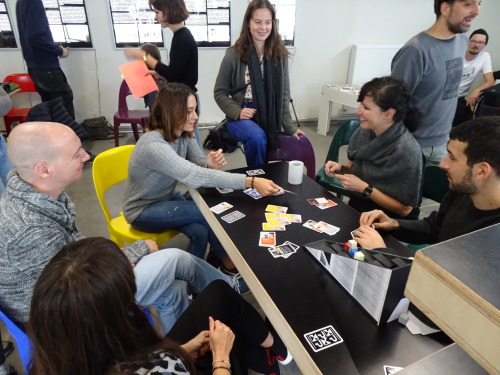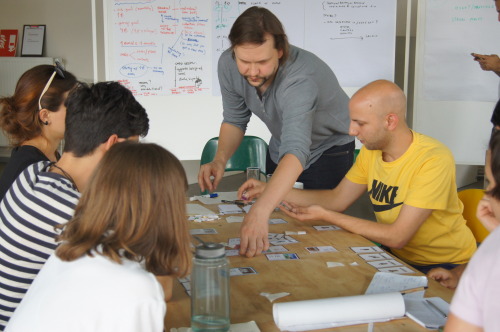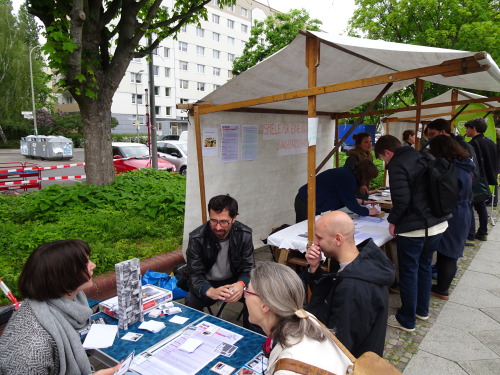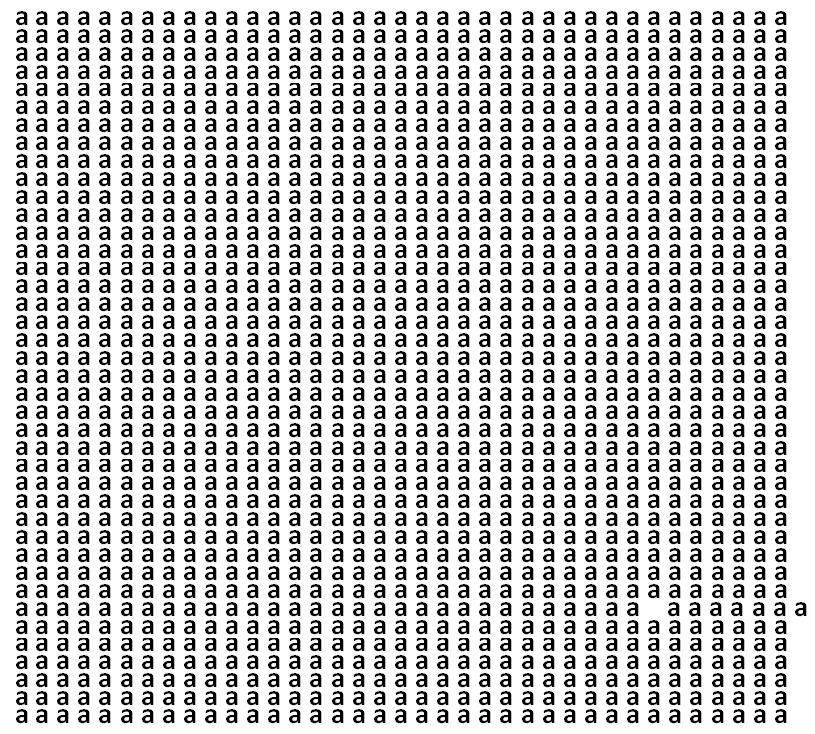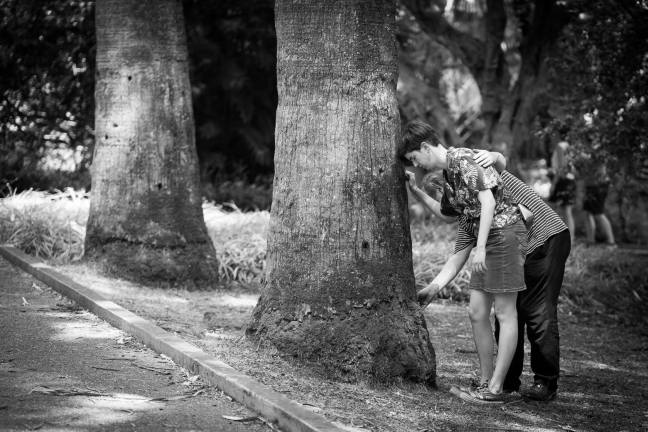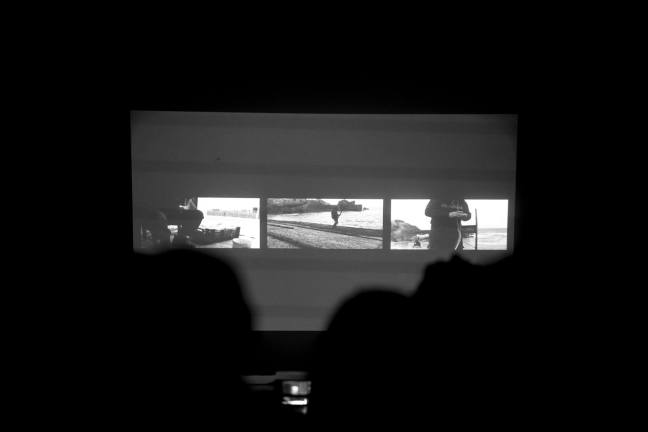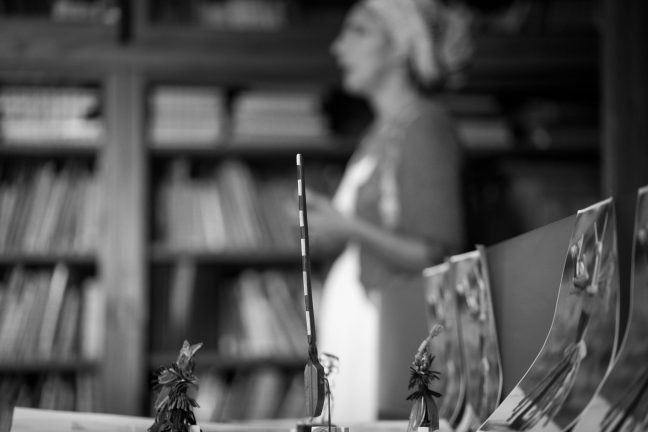
El equipo editorial de la revista (con)textos: revista d’antropologia i investigació social de l’Associació Antropologies y, en particular, Violeta Agudo-Portal han tenido la amabilidad de entrevistarnos a Adolfo Estalella y a mí inaugurando su sección de entrevistas.
En la entrevista reflexionamos sobre el libro que co-editamos Experimental Collaborations: Ethnography through Fieldwork Devices y, más específicamente, los proyectos en torno a la invención antropológica que la plataforma #xcol – Experimental collaborations ha venido abriendo desde sus inicios.
Esta entrevista surge como un espacio para charlar sabre la etnografía, las colaboraciones y la experimentación. El libro que editan recoge y extiende las reflexiones surgidas en las años ochenta en el marco de la publicación de Writing Culture (1986). El volumen no pretende formular nuevas metodologías, sino que aporta una recopilación que George E. Marcus denomina “minimalista” en este sentido. En esta ocasión, la etnografía y el “campo” (the field) se piensan con y a través de la conceptualización y práctica de la colaboración. Se distinguen tres tipos de colaboraciones: El Modo 1, apunta a la prexistente colaboración en el campo, con practicas de origen extractivista asentadas en la jerarquización de las posiciones y relaciones. El Modo 2, aborda la antropología publica y sus alianzas con el activismo, enmarcadas en un trabajo de campo que tiende a estar prediseñado y donde la colaboración esta a su servicio en gran medida. El Modo 3, al que las editores dedican el título del volumen, concibe la colaboración conceptualmente y en la practica coma innovación. Para ello elaboran este modo con términos coma experimento o dispositivo. “Colaboraciones experimentales,” una experimentación que Estalella y Sánchez Criado puntualizan no es novedosa en el trabajo de campo, pero que, sin embargo, no ha encontrado lugar en la mayoría de las textos o monografías, y par lo tanto cuenta con un vocabulario reducido.
Publicado como Estalella, A. y Sánchez Criado, T. (2019). Etnografía, experimentación, dispositivos de campo y colaboraciones. Una entrevista. (con)textos: revista d’antropologia i investigació social, 8 | PDF
**
ETNOGRAFIA, EXPERIMENTACIÓN, DISPOSITIVOS DE CAMPO Y COLABORACIONES: UNA ENTREVISTA CON ADOLFO ESTALELLA Y TOMÁS SÁNCHEZ CRIADO
ENTREVISTA REALIZADA POR: VIOLETA ARGUDO-PORTAL
EQUIPO EDITORIAL REVISTA (CON)TEXTOS ASSOCIACIÓ ANTROPOLOGIES
VIDEOCONFERENCIA, 2 DE MAYO DE 2019
[Durante la videoconferencia Adolfo Estalella tuvo problemas de conexión y, por lo tanto, Tomás Sánchez Criado retomó parte de la conversación cuando esto ocurría]
V.A-P: Nos gustaría que nos explicarais, sobretodo para quienes no han tenido oportunidad de leer el volumen o no conocen vuestro trabajo, cómo surge esta reflexión en torno a las colaboraciones experimentales y la etnografía.
A.E: Pues cómo surge… yo diría que surge de un encuentro personal entre nosotros dos cuando estábamos haciendo trabajo de campo tanto en Madrid coma en Barcelona. Así lo contamos en un artículo en espera de ser publicado, en el que detallamos cómo llegamos algunas de estas reflexiones. Creo que el título del artículo es lo suficientemente iluminador de la propuesta que hacemos: “Do it Yourself Anthropology”. Uno de los dos elementos fundamentales del contexto en el que nos encontramos es el 15M, una época de intensa efervescencia urbana, cuando la ciudad esta poblada de todo tipo de colectivos tratando de habilitar nuevas formas de vida en común, en ese marasmo estamos nosotros investigando y aprendiendo de gentes distintas: activistas, diseñadoras, arquitectos….
Estamos en una ciudad que, coma decimos en el artículo, se ha poblado de vacíos urbanos, vacíos que invitan a repensar y a reinventar la ciudad. Y nosotros paradójicamente nos movemos, en torno a esos vacíos, pensando con otra gente, y al mismo tiempo nos encontramos con un vacío disciplinar, pues no tenemos ningún tipo de enraizamiento dentro de la tradición antropológica española, y no lo tenemos no par desapego sino par las vicisitudes de nuestra trayectoria profesional.
Entonces, tenemos par un lado la falta de interlocutores dentro la academia y, por otro lado, la experiencia de que el tipo de investigación que hacemos ha cambiado con respecto a proyectos previos, nuestros modos de indagar con la gente que nos encontramos son otros… y creemos que merecen ser narrados. Así surge el volumen de Experimental Collaborations, que no es otra cosa que un intento por narrar modos de indagación etnográfica que no se ajustan a los tradicionales ‘tales of the field’…
Sin pretender expresar ningún tipo de novismo o de novedad en la disciplina, no hacemos un argumento sobre la novedad de estas formas de indagaci6n experimental, al contrario, pues pensamos que siempre han formado parte de los modos de indagar antropológicos. Nuestro argumento va en otro sentido y señala la necesidad de describir empíricamente y conceptualizar de manera precisa esos modos experimentales que han sido ignorados, pero que son muy relevantes al abrir la posibilidad de modos de indagación antropológica.
T.S.C: Creo que hay un espacio que nos conecta más personalmente a Adolfo y a mí, y que conecta mucho con estas maneras de pensar y de indagar en relación con una crisis de los saberes expertos que ocurre más genéricamente con el 15M, que es el ámbito de las estudios sociales de la ciencia y la tecnología, en cuyo intento de institucionalización ambos hemos estado también muy implicados.
Por un lado, hemos estado haciendo trabajo de campo con profesionales técnicos y científicos: en el caso de Adolfo ha estado trabajando con arquitectos, colectivos de arquitectura. En mi caso, con diseñadores amateurs y profesionales implicados en el ámbito del cuidado y la vida independiente. Pero, por otro lado, la Red de estudios sociales de la ciencia y la tecnología (RedesCTS) fue un espacio en el que nos encontramos muy cómodos, porque se trataba casi de una extitución antes que una institución. Allí nos encontramos con mucha otra gente que venía de campos coma la sociología, la psicología social y cultural o la historia de la ciencia. Hablo de extitución porque aparecimos coma una especie de prototipo de una nueva forma de asociación científica: explícitamente híbridos y mixtos, con la voluntad de juntarnos con la propia gente con la que estábamos colaborando en nuestros trabajos de campo, pensar junto con ellas, generar contextos de interlocución, modos de indagación común, más o menos complicados. A veces ha salido, otras no.
Ese espacio extitucional que son los estudios de la ciencia y la tecnología digamos que nos abrió a un montón de reflexiones muy poderosas. Nuestra relación con ese espacio de alguna manera se refleja en el vocabulario que también empleamos a la hora de plantear esta exploración sobre las maneras en que hemos estado haciendo trabajo de campo. Ahí encontramos por qué utilizamos un vocabulario relacionado con la experimentación y no sólo la colaboración, que es lo mas común quizás en la literatura etnográfica que reflexiona sobre las nuevas condiciones del trabajo de campo en la contemporaneidad y demás. Pero bueno, curiosamente, muchas de las reflexiones que en el ámbito de la antropología en lengua inglesa sobre cómo repensar, modificar y reapropiarse los modos de hacer trabajo de campo, se hacen también en esa encrucijada.
La encrucijada entre una antropología de la contemporaneidad que se piensa muy vinculada a la transformación de los saberes, que piensa la crisis de la modernidad, que piensa la crisis del saber experto, que piensa la pluralidad de saberes que tienen que ser convocados en la propia antropología o que abre la antropología a otras para que la ocupen. Estoy pensando par ejemplo en el caso de Estados Unidos donde gente como Kim Fortun, o claro, anteriormente George E. Marcus, Michael Fischer o Paul Rabinow abrieron toda una conversaci6n en esta dirección. Par situar un poco dónde surge lo que comentamos.
Adolfo y yo nos conocemos, antes que como antropó1ogos a secas, como antropó1ogos interesados en pensar una antropología de la ciencia y la tecnología: en ese espacio extitucional, en el momento de cierre de nuestras tesis y en momento de apertura de otros trabajos de campo. Es ahí donde surgió la conversaci6n en torno a una pregunta muy sencilla: ¿Qué narices nos está pasando? A él le pasa trabajando con colectivos de arquitectura en Madrid, que se ponen a pensar infraestructuras abiertas para rehacer la ciudad. Y a mí me pasa en Barcelona, muy vinculado a la gente del foro de vida independiente y al activismo de la diversidad funcional, que de repente entran en una especie de delirio que quieren rediseñar sus espacios de encuentro, sus sillas de ruedas, quieren rediseñar la manera en que de relacionan con lo que se suelen denominar ‘ayudas técnicas’. Ambos grupos ponen patas arriba el orden instituido y las jerarquías del diseño de la ciudad y de las tecnologías.
Como veis esto tiene que ver con una cosa más complicada que un mero contexto. Más bien se trató de una transformación del papel que tenía el saber y, por lo tanto, que impactó directamente en nuestra propia manera de producir conocimiento a través de la etnografía. Vivir esa situación transforma la manera en que la etnografía ocurre porque no puedes estar en el campo única y exclusivamente con un cuaderno de notas, a tu bola. Tienes que generar unos contextos para compartir lo que allí está ocurriendo. Todo esto alteró profundamente para nosotros las maneras en que solemos pensar cómo debe ser la etnografía canónicamente, o al menos sobre cómo nos la explican las manuales.
V.A-P: La verdad es que habéis ido respondiendo muchas de las preguntas que tenía, pero voy a compilar varias cuestiones. Por un lado, en relación con una curiosidad sobre un dato que acabáis de comentar sobre la próxima publicación de un artículo que se titula “Do it Yourself Anthropology”. En este caso elegís hablar de antropología y no de etnografía. Sin necesidad de meternos a fondo en el campo de las distinciones entre ambas, pero nos gustaría saber que hay detrás de este traspaso terminológico de la etnografía a la antropología. Pero antes de ir a esa cuestión también quería retomar lo que comentaba Tomás, que ya se ha hablado en numerosas ocasiones sobre la colaboración en la antropología de la contemporaneidad, etc. Es interesante cómo en el volumen no sólo se aborda la acepción más romántica de colaboración, sino que también se reconocen otros aspectos menos idealizados. En este marco, ¿qué entendemos par “colaboraciones experimentales” en el trabajo de campo? ¿Y cómo se relaciona el volumen y esta propuesta con las diferentes crisis de reflexividad en torno a la etnografía, especialmente a partir de las arias ochenta?
T.S.C: Todo esto se inicia en 2014 con un panel en la EASA (Ethnography as collaboration/experiment) con un intento de pensar, después de varios años con Adolfo debatiendo sobre las vicisitudes de nuestro trabajo de campo. Empezamos a leer mucho sobre el giro colaborativo en la antropología: una crítica bastante temprana sobre el modo extractivista de pensar las relaciones de campo, que suele distinguir entre el informante y el informado, entre quien tiene preguntas y quien da respuestas, un modo de indagación criticado por su carácter individualista o colonial donde la estancia en el campo se transmuta en una autoridad como autor que da fe de aquello que ha visto.
Es un pacto o de cláusula de objetividad basada en la indexicalidad, similar a la que tienen las periodistas. Esta manera de narrar el encuentro etnográfico entra en crisis en los años 80, pero tambien los modos y maneras de hacer trabajo de campo. En nuestra revisión, sin embargo, también nos distanciamos de ciertas maneras que han sido reivindicadas como la solución a esto, en la forma de programas implicados o comprometidos.
De forma heurística en nuestra revisión, par tanto, hablamos de tres modos de colaboración. Hablamos de un modo 1, una forma extractivista de entender la circulación de información, donde se distingue quien informa y es informado. A continuación, repasamos lo que llamamos el modo 2, que sería el modo de la antropología implicada o comprometida, que genera espacios de co-escritura y co-análisis. Muchos de estos trabajos han sido una gran inspiración al estar trabajando ambos en espacios activistas. Sin embargo, nos parece que este modo suele tener demasiado claros los objetivos políticos de la intervencion, y se suele seguir haciendo una distinción muy fuerte entre quien es antropóloga y quien no. Es por ello que distinguimos un modo 3, o experimental, donde la colaboración requiere un enorme trabajo de diseño para generar espacios abiertos de problematización conjunta, de co-investigación y donde los otros devienen pares epistémicos.
Este modo 3 remite mucho al momento en que estábamos haciendo nuestro trabajo de campo. En el momento posterior al 15M, con todas sus ramificaciones enormes, es un momento de gran incertidumbre. La crisis, que es también una crisis de los saberes expertos, no sólo una crisis económica como se suele narrar, también va vinculada a una fortísima apropiación activista crítica de la manera en que debe repensarse quién o cómo se investiga. El modo 3 es nuestro hallazgo etnográfico. Nos dimos cuenta que muchas de las cosas que estábamos haciendo no podían ser descritas al modo 1 ni en el modo 2, que la inventiva de las situaciones vividas con esos pares epistémicos necesitaba quizá de otro vocabulario para poder ser descrita. Aquí nuevamente los estudios sociales de la ciencia y la tecnología fueron muy relevantes para describir y dar cuenta de su detalle concreto. Autores coma John Law han venido trabajando sobre lo que denominan ‘la vida social de los métodos’, prestando atención a los métodos coma peculiares dispositivos que ordenan el mundo y las relaciones de modos siempre peculiares, donde la actividad investigativa es generativa de mundo.
Nuestro trabajo hacía muy presente el papel de diferentes dispositivos: plataformas web para pensar juntas o blogs para documentar y reflexionar conjuntamente nuestras experiencias transformaban la investigación solitaria en un campo común, donde las espacios de análisis y la toma de notas se convertían en algo compartido, generativo de otras relaciones de problematización conjunta: donde infraestructuras abiertas coma Ciudad Escuela permitían repensar la ciudad contemporánea y sus propiedades, donde el diseño abierto desde la diversidad funcional de En torno a la silla nos permitía ensayar otras posibilidades de relación distintas a las que ofrece y hace posible la concepción dependentista del estado de bienestar. Así, empezamos, poco a poco, a hablar e intentar nombrar los “dispositivos etnográficos” que nuestros trabajos de campo en esos lugares tan peculiares habían hecho disponibles.
Entonces, par ejemplo, nos encontrábamos con cómo nuestras investigaciones estaban repletas de dispositivos u ocasiones generativas: de repente acabas organizando eventos, donde acaban hablando muchas de las personas con las que estas trabajando, que se convertían no en lugares para enseñar lo ya sabido, sino para pensar juntas lo que nos estaba ocurriendo. Donde de repente los eventos que uno produce ya no son el producto final de un trabajo etnográfico, sino un dinamizador de la propia etnografía: Hacer una charla, hacer un evento, una documentación de un proceso, hacer una exposición, etc. se convertían en dispositivos para hacer trabajo de campo, no tanto para representarlo a posteriori.
Esa atención a los dispositivos de campo nos permitía describir las formas experimentales que nuestros trabajos de campo estaban tomando en situaciones que se parecen mucho a esas formas de vida emergentes (emergent forms of life) de las que habla Michael Fischer, el antrópologo norteamericano, tomando inspiración del filósofo e historiador de la ciencia Hans-Jörg Rheinberger y su análisis de los “sistemas experimentales”, como las laboratorios, que son entornos singulares donde se inscribe de muchas maneras lo que ocurre, y donde lo mas relevante es que lo que ocurre sirva para hacernos nuevas preguntas.
Pero antes que en el espacio cerrado de una ciencia institucionalizada, nuestras etnografías tomaban características de las propias condiciones experimentales ‘salvajes’ donde nos movíamos: con muchas personas generando dispositivos y condiciones de indagación sobre lo que les ocurre, lo que les pasa, sobre quienes son, a dónde vamos, de todo tipo. Pensemos, por ejemplo, en la PAH con un gran aparato de producción de inteligibilidades sobre las condiciones de la crisis inmobiliaria en España, donde además de toda la red de soporte interpersonal generan condiciones para hacer a la gente compartir sus experiencias, se sistematizan esos conocimientos y se producen informes, que a su vez sirven para generar una manera de repensar las relaciones con otros. De alguna manera peculiar hacían cosas que se parecen mucho a las que hacemos nosotros como antropólogos.
Entonces, bueno, nos dimos cuenta de que quizás lo que ocurre es que ya no es sólo una forma colaborativa en un sentido implicado o involucrado o comprometido, sino que estamos ante gente que está investigando. De alguna manera, lo que hace experimental nuestro trabajo no es el juego más o menos ficcional con las formatos de representación, sino el hecho de que estamos produciendo experimentos de campo al trabajar con “comunidades epistémicas” (coma las llaman Holmes y Marcus) más o menos en crisis, más o menos consolidadas, más o menos activadas donde el conocimiento y el saber forman parte de la propia manera de la que esta gente se conduce y que por eso mismo disputan la propia manera de producción de saber nuestra.
Pero, claro, lo que nos parece fascinante es cómo esto nos hace repensar qué puede ser la etnografía hoy, que es una reflexión que no es sólo nuestra evidentemente, es una reflexión muy profunda en los últimos treinta años de la antropología que se abre hacia muchos sitios: se la hace la gente de la antropología visual, sensorial, la gente que trabaja en la encrucijada con las STS, la gente que trabaja en diseño o en el ámbito urbano; hay hoy día muchas encrucijadas donde el objeto de interés de la disciplina, cómo hacemos trabajo de campo, para qué lo hacemos y cuáles son las condiciones de relevancia son objetos de indagación y experimentación constante.
V.A-P: Interesante… También nos ha llamado la atención que el “experimento etnográfico” no es tanto una desviación de la observación participante como una modalidad en sí misma. ¿Cómo se interrelacionaría la observación con la experimentación? Quizás a través de algún ejemplo…
T.S.C: En la introducción intentamos repasar el origen de la distinción entre experimentación y observación, que es mucho más reciente y más compleja de hacer de lo que pudiera parecer. Los orígenes del trabajo de campo antropológico, a finales del XIX, remiten a un momento de grandes prestamos epistémicos, y sus formas son un compuesto con gran inspiración naturalista en el trabajo de observación de bió1ogos o zoó1ogos, en muchas ocasiones en expediciones conjuntas. Pero el trabajo de campo de los naturalistas, como muchos trabajos en historia de la ciencia vienen mostrando repetidamente, está siempre en una relación constante con el trabajo experimental de laboratorio. En antropología, sin embargo, la experimentación ha tenido mala fama coma modo de explicar las modos de hacer de la etnografía. Reivindicar la experimentaci6n es un argumento complejo de hacer.
Como explican historiadores de la antropología como George Stocking Jr. la obsesión con la observación parece obra de la antropología social británica. Pero frente al relato malinowskiano de la observación participante como una relación naturalista, trabajos más recientes nos permitirían pensar si quizá la observación en el campo también fue una forma experimental para la antropología. El reciente libro de Hviding y Berg The Ethnographic Experiment: A.M. Hocart and WH.R. Rivers in Island Melanesia, 1908, de alguna manera recupera otra manera de narrar la inventiva etnográfica que supusieron las primeras formas de estancia prolongada en el campo, condiciones experimentales a partir de las cuales surge lo que hemos llamado observación participante.
Este trabajo fue muy importante para pensar si quizá antes que algo nuevo o radical, la experimentación hubiera estado a la base de todas las formas de inventiva metodológica en el trabajo de campo etnográfico. ¿Qué ocurre si todas las formas de indagación etnográfica que hoy solemos denominar con el epíteto “observación participante” no fueran sino dispositivos que en un momento fueron experimentos en los modos de describir, relacionarse o relatar? Desde los diagramas de relaciones de parentesco, hasta las relatos poéticos fragmentarios ahí hay una gran inventiva de modos y maneras de estar en el campo, generar registros y dar cuenta de lo que allí sucede…. Y nos parece que antes que una defensa de la observación, esto llama a buscar un género de explicar y describir el trabajo etnográfico haciendo relevante el pulso experimental que siempre ha existido en el trabajo antropológico, y que se traduce cuando solemos hablar coloquialmente de que el trabajo etnográfico es en realidad un método muy flexible. Por tanto, ¿y si la experimentación no fuera nada nuevo?
Sin embargo, tenemos pocos relatos como el que nos ofrecen Hviding y Berg, donde la experimentación de campo quede bien reflejada. Muchos de nuestros manuales etnográficos construyen un catálogo de herramientas o instrumentos precocinados. Y muchos de los relatos informales sobre cómo se hace trabajo de campo tienen mucho de “vete, aprende a hacerlo haciendo y ya nos cuentas una historia interesante al volver”. Entre la etnografía de manual y la relación etnográfica improvisada nos parece que habría al menos otra manera de describir de forma mas fehaciente en qué consiste hacer etnografía, otra manera de narrar lo que hacemos en el campo, para la que quizá no tenemos un vocabulario.
Es por eso por lo que el libro, más allá de nuestros propios trabajos, de alguna manera intenta convocarnos a describir denodadamente el carácter experimental de los “dispositivos de campo” de la etnografía. El trabajo del resto de capítulos nos parece que ilustran que la experimentación no sólo ocurre en el modo marcadamente explícito como el 15M, sino en cualquier aproximación a la construcción de una indagación antropológica singular: cómo hacer una etnografía de las giras de una banda, cómo aprender que quizá antes que refrendar sus ideas de lo que es la etnografía quizá la mejor manera de relacionarse con los diseñadores es friccionar, y así toda una pléyade de pequeñas invenciones de campo que el libro quiere documentar.
V.A-P: Para ir cerrando, os resumo las últimas cuestiones que podríamos abordar. En el libro encontramos que la mayoría de los casos se tratan de lo que se llama en ocasiones, “etnografía hecha en casa” o “at home”. Es decir, cuando no hay una ruptura de coordenadas espaciales en ese sentido, cuando “ir allí” puede ser ir a un sitio en el que ya habías estado o que pasas a menudo, pero en esta ocasión quizás hablando con gente que no habías hablado, etc. ¿Cómo relacionaríais vuestra propuesta y reflexión con llevar a cabo la etnografía en tu propio contexto geográfico? ¿Y qué pasa con la evocación de integridad que ha tenido la etnografía, especialmente como -grafía, a la hora de generar una narración descriptiva que evocaba una cierta integración dentro del trabajo de campo? Por ultimo, comentaros en relación con el trabajo que hacemos en la Associació Antropologies nos encontramos que en los contextos urbanos hay una proliferación de personas con perfiles muy variados haciendo etnografias o incluso para-etnografias. Y esto nos ha hecho reflexionar sobre una tendencia y un cierto énfasis en clasificar las indagaciones como ‘etnográficas’. Un encuentro constante con la palabra etnografía, ¿qué os sugiere el auge de esta adjetivación?
A.E: Con respecto a la primera pregunta, no sabemos el alcance que la propuesta de colaboraciones experimentales puede tener en contextos distintos a aquellos en las que surge la reflexión. Eso en realidad queda en manos de aquellos antropólogos y antropólogas que pueda considerar inspiradora la propuesta. Uno de los esfuerzos que hacemos no es señalar la novedad de ciertos trabajos de campo, ciertas prácticas etnográficas que diríamos no son absolutamente novedosas. Lo que sí hay de novedoso es el intento de conceptualizarlas, el vocabulario que tenemos para describir las prácticas etnográficas es bastante limitado en este sentido. Una observación participante es insuficiente para dar cuenta de las prácticas epistémicas de campo. Lo que estamos explorando es un vocabulario conceptual para dar cuenta de la etnografía. No es sólo una propuesta para la práctica, sino un ejercicio también de conceptualización de la etnografía. Desde esta perspectiva, lo que esta en juego entonces no es si los dispositivos de campo que describimos, esos modos de relación que permiten la relación en el campo pueden ser aplicables en otras geografías, lo que verdaderamente esta en juego es un esfuerzo par documentar, describir y conceptualizar los gestos de inventiva que son parte esencial de la construcción de nuestras relaciones etnográficas.
T.S.C: Simplemente añadir una pequeña nota, la distinción “casa” o “fuera”, a mi personalmente me parece francamente problemática.
A.E: Sobre todo qué hay detrás de esa idea.
T.S.C: Es un problema, que Marilyn Strathern o George Marcus o Paul Rabinow se plantean con mucho detalle. A la hora de abordar sociedades complejas, llenas de encuentros fugaces o formas de socialidad emergente y gente de la que no tenemos ni idea de lo que son mantener la mirada un tanto etnicista o culturalista que hay detrás de esta idea casa/fuera es un imaginario muy problemático. No porque no tenga sentido pensar los contrastes de todo tipo: lingüísticos, en las prácticas, en las relaciones de dominación, etc. Pero si algo hemos aprendido de la antropología de la ciencia y la tecnología es que hay muchas formas esotéricas de sociedad o socialidad que el proyecto moderno ha ayudado a traer a la presencia, y donde no está tan claro que podamos entender lo que suponen por mucho que ocurran en un edificio a dos manzanas de donde vivimos.
V.A-P: Me parece relevante comentar alga que ya ha ido saliendo, coma es la toma de notas. En etnografías en las que estás involucrada haciendo muchas otras cosas que no te permiten tomar notas, esa estética de tomar notas y el tipo de descripciones que se espera surjan de ellas se desmorona y aparecen otro tipo de registros… ¿Nos podéis poner algunos ejemplos de esta parte más práctica?
T.S.C: Creo que todas esas rupturas que comentaba antes, la antropología visual, la sensorial, digital, la design anthropology han venido abriendo modos y maneras formas de representar, o incluso de no-representar muy diversas. Todo ese campo de experimentación que hoy día se conoce como antropología multimodal, es decir, la producción etnográfica más allá del registro textual y visual están inventando todo otro tipo de registros y maneras de documentar y producir situaciones de campo. Esa inventiva multimodal lleva aparejadas formas de “hacer con otros”, hacer investigación a través de las formas de documentación diagramática de personas coma Carla Boserman, una colega con la que también hemos aprendido a tomar notas de campo de otro modo. Sus relatogramas, como ella los llama, son composiciones de dibujo y texto que relatan situaciones y sus atmósferas. Pero no se acaban ahí: luego los escanea, sube a la red, provocan discusiones…no son sólo registros, sino también plataformas relacionales que abren a otras conversaciones.
A.E: Regreso sobre la extensión de la utilización del concepto de etnografía o su invocación constante en distintos colectivos de la figura de la etnografía que comentabas. Es algo a lo que se ha referido de manera provocadora Tim Ingold. Por ejemplo, en mi caso, yo diría que una de las cosas más interesantes trabajando con muchas de mis contrapartes (arquitectos, activistas, etc.) ha sido el descubrimiento de otras formas de indagación para investigar la ciudad. En mis proyectos yo no me he preocupado par la ortodoxia disciplinar, de hecho, no describiría mis proyectos coma interdisciplinares o multidisciplinares sino como colaboraciones experimentales. Siempre me he personado coma antropólogo y es precisamente eso lo que les resulta relevante a mis contrapartes en el campo. Desde esa perspectiva disciplinar, un aspecto destacado de la relación con las otros ha sido el descubrimiento de que la etnografía se puede enriquecer prestando atención y aprendiendo de esas otras formas de indagación… A la propuesta de Ingold y otros de pensar la antropología no como una practica que investiga a otros, sino una empresa en la que investigamos con otros le podemos añadir un nuevo nivel. La idea de que aprendemos con otros a investigar en nuevos términos. La manera de enriquecer y expandir la antropología es aprendiendo de las formas y modos de indagar de nuestras contrapartes.
En mi caso, he aprendido mucho de la sensibilidad material de arquitectos y arquitectas que operan mediante intervenciones materiales. Si tienen que hacer entrevistas, pues fabrican una silla, una infraestructura que colocan en la calle para interpelar a los viandantes, y por mundana que sea nos abre toda una serie de preguntas sobre la materialidad de nuestros métodos. Y de repente, la silla se convierte en una especie de atractor de la gente que se acerca… Se convierte en una especie de escenario, una especie de dramaturgia material en el espacio público. Puede parecer una anécdota, pero revela una particular sensibilidad, en este caso de los arquitectos, para pensar los métodos de investigación y las formas de indagación. Y eso representa toda una oportunidad para reaprender y reincorporar algunos de estos dispositivos o formas de investigación dentro de la propia antropología. Yo lo veo con mis alumnos, donde los modos tradicionales de hacer son insuficientes especialmente en la ciudad para pensar la complejidad de los mundos urbanos actuales. En esta situación quizás tenemos que empezar a equiparnos con otro tipo de técnicas, métodos o dispositivos, que es el vocabulario que nosotros manejamos. Otros modos de indagación.
V.A-P: La parte sobre la etnografía como etiqueta que prolifera, no la pensábamos tanto como quién tiene derecho a hacer etnografía, sino que nos parecía interesante como si hubiese una autoridad inscrita en adjetivar así, que nos puede parecer incluso paradójica por nuestra experiencia, al decir que aquello que haces es etnográfico como un argumento de autoridad. Y luego, para cerrar la entrevista. Después de la publicación del libro, que ha pasado un año… ¿hay algún tipo de reflexión sobre los comentarios o feedback que habéis recibido que os gustaría comentar?
A.E: En realidad el libro lo que hace es poner un primer ladrillo de un trabajo que todavía estamos desarrollando en la plataforma xcol, un proyecto que queremos abrir a la colaboración de otros, que se articula a través de dos líneas de reflexión, intervención (también intravenciones) y práctica. Una de ellas tiene que ver con la idea de que, si las colaboraciones experimentales son un modo particular de etnografía, una de las preguntas que podemos hacernos es qué tipo de contextos, de recursos pedagógicos son necesarios para aprenderla.
Ahí tenemos toda una reflexión en torno a lo que llamamos, en ocasiones, ‘formatos abiertos’, metodologías del encuentro que adoptan la forma de talleres – la clínica de experimentaciones etnográficas que llamamos Cleenik – o laboratorios. La pregunta que nos planteamos es qué contextos específicos podemos diseñar para el aprendizaje de estos modos de indagación y cómo podemos documentar esos formatos. Documentarlos de manera que puedan viajar a otros lugares y puedan ser reproducidos por otros. Esa es una preocupación que tenemos y es lo que hicimos en #Colleex que es la red que montamos dentro de la EASA. Uno de los trabajos que hemos hecho ha sido documentar varios de estos formatos y ahí la pregunta es cómo documentamos estas metodologías, qué tipo de lenguajes visuales podemos utilizar y dónde podemos encontrar inspiración para la documentación de este tipo de eventos. Esta sería una de las vías de indagación que se nos abre a partir del libro.
Y la otra tiene que ver con este ejercicio documental de los dispositivos de campo. Una de las ideas que estamos desarrollando ahora, muy inspiradas en algunos de los trabajos de P. Rabinow es esta idea de que nuestros trabajos etnográficos están repletos de invención. Frente a la idea de que la colaboración es el resultado de la aplicación de un método, que es lo que podemos encontrar en algunas ocasiones, ¿no? Así se expresa en la idea de las metodologías colaborativas, metodologías para producir colaboraciones. Eso nos resulta bastante incómodo, y en su lugar planteamos que el trabajo de campo esta siempre repleto de invención. Y esta figura, la invención, no es completamente ajena a la antropología, si nos remitimos a Roy Wagner cuando describe la empresa antropológica coma dedicada a la invención de la cultura.
Siguiendo este argumento, una de las cuestiones que nos planteamos es cómo podemos documentar todos estos gestos inventivos que han sido completamente marginados, invisibilizados o relegados al olvido en tantas etnografías. Los ‘tales of the field’ con los que hemos tendido a narrar y a describir en que consiste la etnografía lo que han hecho ha sido ignorar la increíble complejidad de nuestros trabajos de campo… porque no se han documentado ni conceptualizado esos modos de relación etnográfica tan habitualmente cargados de inventiva. Entonces una de las cosas a las que andamos dándole vueltas es a inventar una especie de inventario etnográfico.
Un inventario que por un lado reconozca que la etnografía es siempre un ejercicio de invención y que, par otro lado, produzca un inventario donde se recopilen y documenten todos esos dispositivos de campo que son diseñados o inventados en distintas etnografías. Y entonces estamos dándole vueltas a esta idea de pensar la etnografía coma inventario o coma un inventario. Un inventario en el sentido que toda etnografía es un ejercicio de invención y un ejercicio de invención que demanda ser inventariado, que requiere el diseño de inventarios que lo que hagan sea alojan o documentar y hacer disponibles para otros esos dispositivos que resultan de nuestros trabajos de campo. Estas son las dos líneas en las que ahora estamos trabajando.
V.A-P: Justamente por esta cuestión de la colaboración y su complejidad que es interesante esta idea de contar con una caja de herramientas más creativas, para no acabar recurriendo a las formas de hacer que ya conocemos y que en muchas ocasiones no son suficientes para muchos de los lugares en los que llevamos a cabo etnografías en la actualidad. Ya sean etnografías urbanas o en instituciones, como comentabas el caso de P. Rabinow. O también es interesante cuando la colaboración viene prediseñada de forma externa. Así que estaremos alerta para ver de qué se va componiendo el inventario que comentabais… Muchas gracias por vuestro tiempo.




